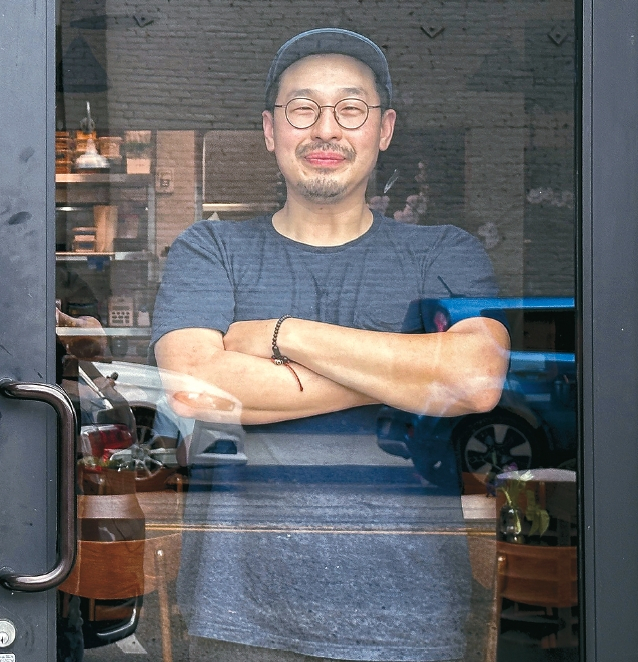As of May this year, the world has 25 Michelin-starred Korean restaurants, five two-starred, and 20 one-starred. On February 2, South Korea’s Ministry of Agriculture, Food and Rural Affairs announced that it plans to help expand this number to 100.
However, Chef Kwang Uh of the modern Korean restaurant Baroo is questioning how well Koreans themselves know Korean food. While upscaling Korean food is part of the globalization of Korean food, Koreans need to know Korean food better before that, he said. Having run a modern Korean restaurant in the U.S. for 10 years, Chef Uh shares his thoughts on the current state of upscaling of Korean food.
-Korean fine dining is a trend right now.
“Korean fine dining is a type of Korean food that has never existed before. As Koreans, we need to think about what kind of fine dining is ours. We also need to think about and define what is Western fine dining and how we can go in parallel.”

-Most Korean fine dining is fusion cuisine.
“You can definitely push towards authenticity. But the question is, how authentic is authentic that we know it? It can also be a marketing tool. If original Korean food has remained unchanged over the years, it would taste very much like Pyongyang Naengmyeon (mild flavoring North Korean-style cold noodle). There is nothing like that in the U.S. yet. And I don’t think the mainstream diners would recognize its taste.”
-Is fusion also Korean food?
“There may come a day when what we call fusion Korean food will be perceived as authentic Korean food. Young chefs are highly engaged with the internet and foreign cultures and culinary practices. They take it and they put their own spin on it. Also, the way they express themselves in their dishes seems to be changing very quickly. I think in the near future, the current fusion Korean food will be credited as authentic Korean food.”
-Why are Koreans disapproving fusion cuisine?
“Fusion is also a way of expressing Korean food. There are many different opinions in this world. You can’t cater to everyone’s preferences. I have always said that I do fusion instead of saying that I do Korean food.“
-Why is there not much Korean fine dining in Los Angeles?
“I think it is about the demand. New York has a higher demand for course-based prix fixe menus. I also know that New York has a high demand for tourists to spend at restaurants. On the other hand, LA seems to have more for casual dining than fine dining because of its unique atmosphere. I also thought that opening a fine dining in LA would be risky. Unlike New York, LA doesn’t seem to have a lot of tourists spending money at restaurants. Also, if you analyze the consumption patterns of Korean Americans, you can see the consumption of Korean fine dining. Most of them in LA seem to be conservative when it comes to spending on fine dining.”
-How should a Korean restaurant catering to Koreans attract other customers?
“The restaurant owners of my parents’ generation are not used to marketing to this day. However, with a little bit of adaptation and marketing, they can attract a lot of customers. For example, delivery platforms are a good medium to promote Korean food and restaurants. Delivery platforms are used by a wide range of people. The more different delivery platforms and methods you use, the more diverse your customer base will be. It’s time for them to expand their demand by attracting a wide range of customers, beyond just Korean Americans.”
-What are the limitations that Korean food has to overcome?
“We need to know ourselves well. We have to know ourselves and know what the originality of Korean food is. Only then will we be able to upscale Korean cuisine and create our own Korean fine dining.”
BY KYEONGJUN KIM, HOONSIK WOO [kim.kyeongjun1@koreadaily.com]




